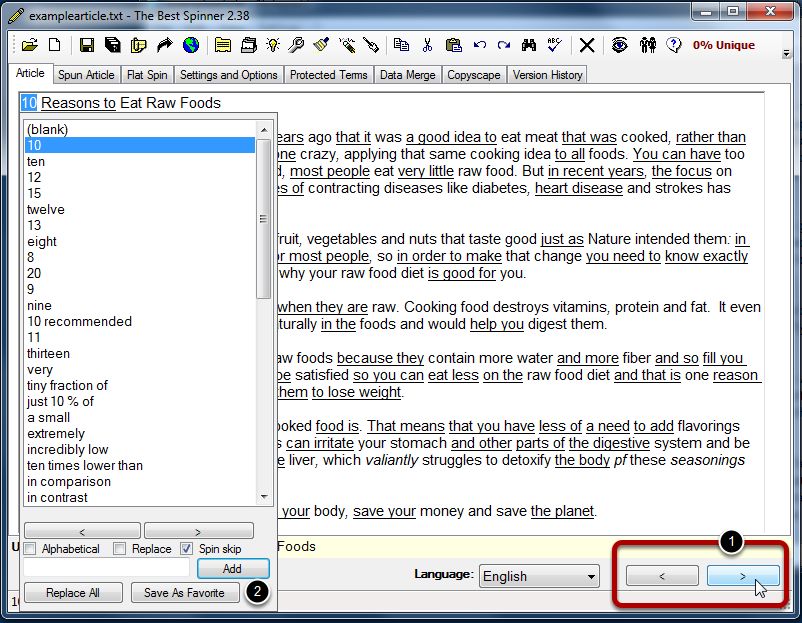

When a synonymous or silent mutation occurs, the change is often assumed to be neutral, meaning that it does not affect the fitness of the individual carrying the new gene to survive and reproduce. Hence, the substitution is a synonymous one. The amino acid at that position in the protein will remain a phenylalanine. In the above phenylalanine example, suppose that the base in position 3 of a TTT codon got substituted to a C, leaving the codon TTC. There are two mechanisms for redundancy: several different transfer RNAs can deliver the same amino acid, or one tRNA can have a non-standard wobble base in position three of the anti-codon, which recognises more than one base in the codon. This is often referred to as redundancy of the genetic code.
Changes synonym code#
For example, the codons TTT and TTC both code for the amino acid phenylalanine. up to three codons that do not code for any amino acid and are known as stop codons, indicating that translation should stop), some amino acids are coded for by 2, 3, 4, or 6 different codons. Because there are 64 possible codons, but only 20-22 encoded amino acids (in nature) and a stop signal (i.e. Each of these amino acids is coded for by a sequence of three DNA base pairs called a codon. Protein translation involves a set of twenty amino acids. negatively to positively charged amino acid), or radical (vastly different amino acid). A nonsynonymous substitution results in a change in amino acid that may be arbitrarily further classified as conservative (a change to an amino acid with similar physiochemical properties), semi-conservative (e.g. This is reflected in the codon usage bias that is observed in many species. The substrate specificity of the tRNA to the rare codon can affect the timing of translation, and in turn the co-translational folding of the protein.

Ī synonymous mutation can affect transcription, splicing, mRNA transport, and translation, any of which could alter the resulting phenotype, rendering the synonymous mutation non-silent. Since there are 22 codes for 64 codons, roughly we should expect a random substitution to be synonymous with probability about 22/64 = 34%. Synonymous substitutions and mutations affecting noncoding DNA are often considered silent mutations however, it is not always the case that the mutation is silent. This is possible because the genetic code is " degenerate", meaning that some amino acids are coded for by more than one three-base-pair codon since some of the codons for a given amino acid differ by just one base pair from others coding for the same amino acid, a mutation that replaces the "normal" base by one of the alternatives will result in incorporation of the same amino acid into the growing polypeptide chain when the gene is translated. Point substitution mutations of a codon, classified by their impact on protein sequenceĪ synonymous substitution (often called a silent substitution though they are not always silent) is the evolutionary substitution of one base for another in an exon of a gene coding for a protein, such that the produced amino acid sequence is not modified. For words related to "synonym", see Synonym (disambiguation).


 0 kommentar(er)
0 kommentar(er)
